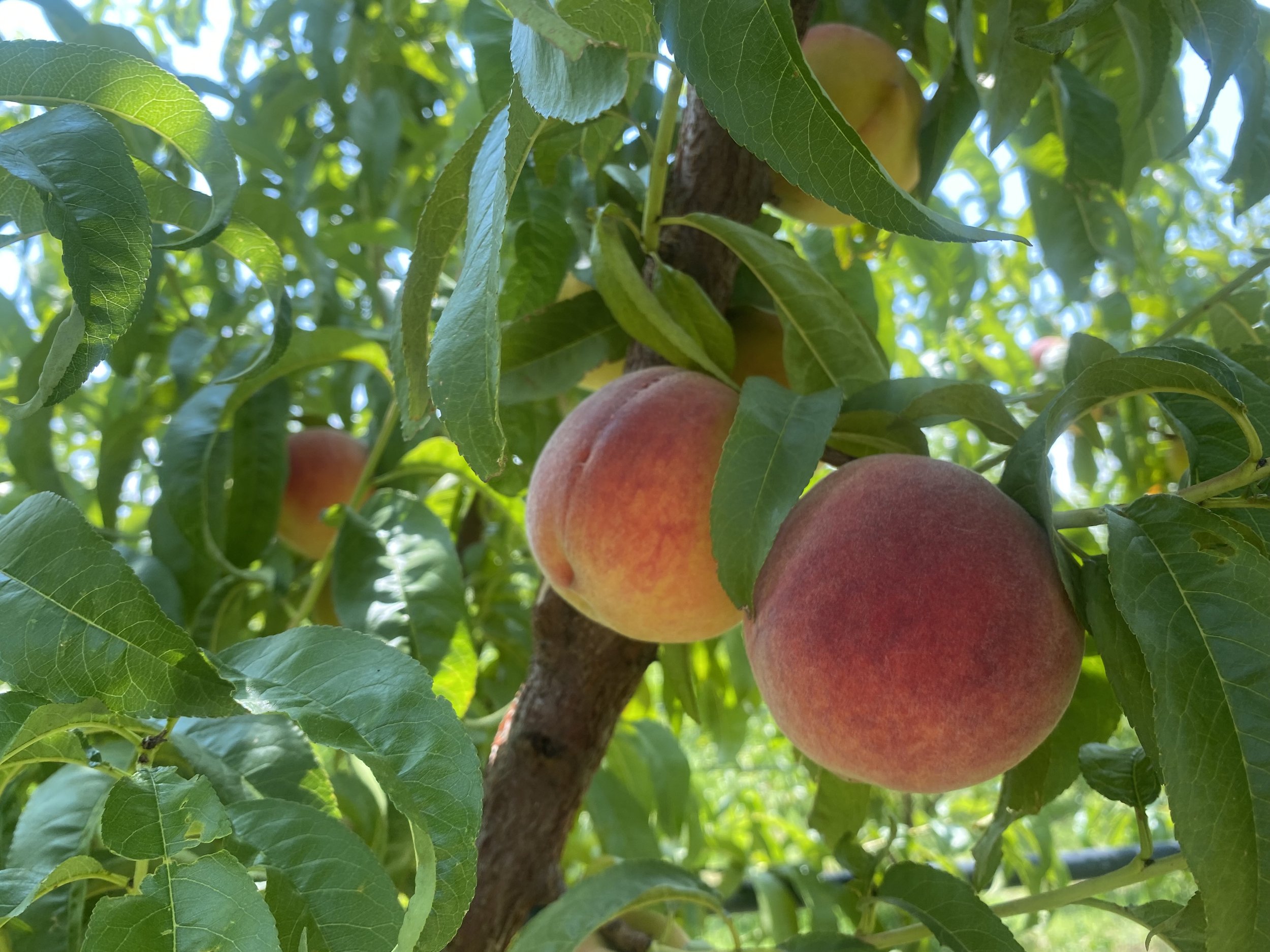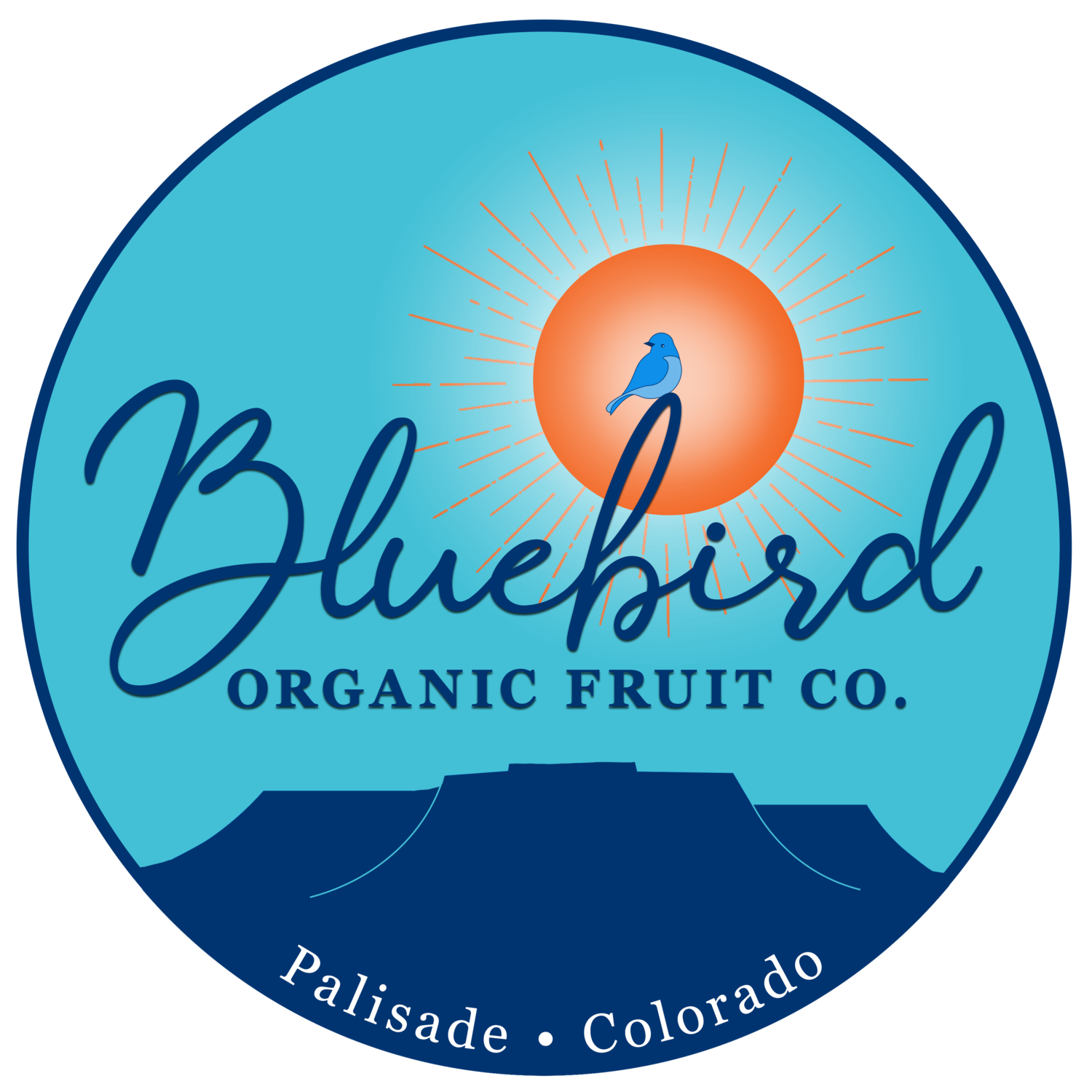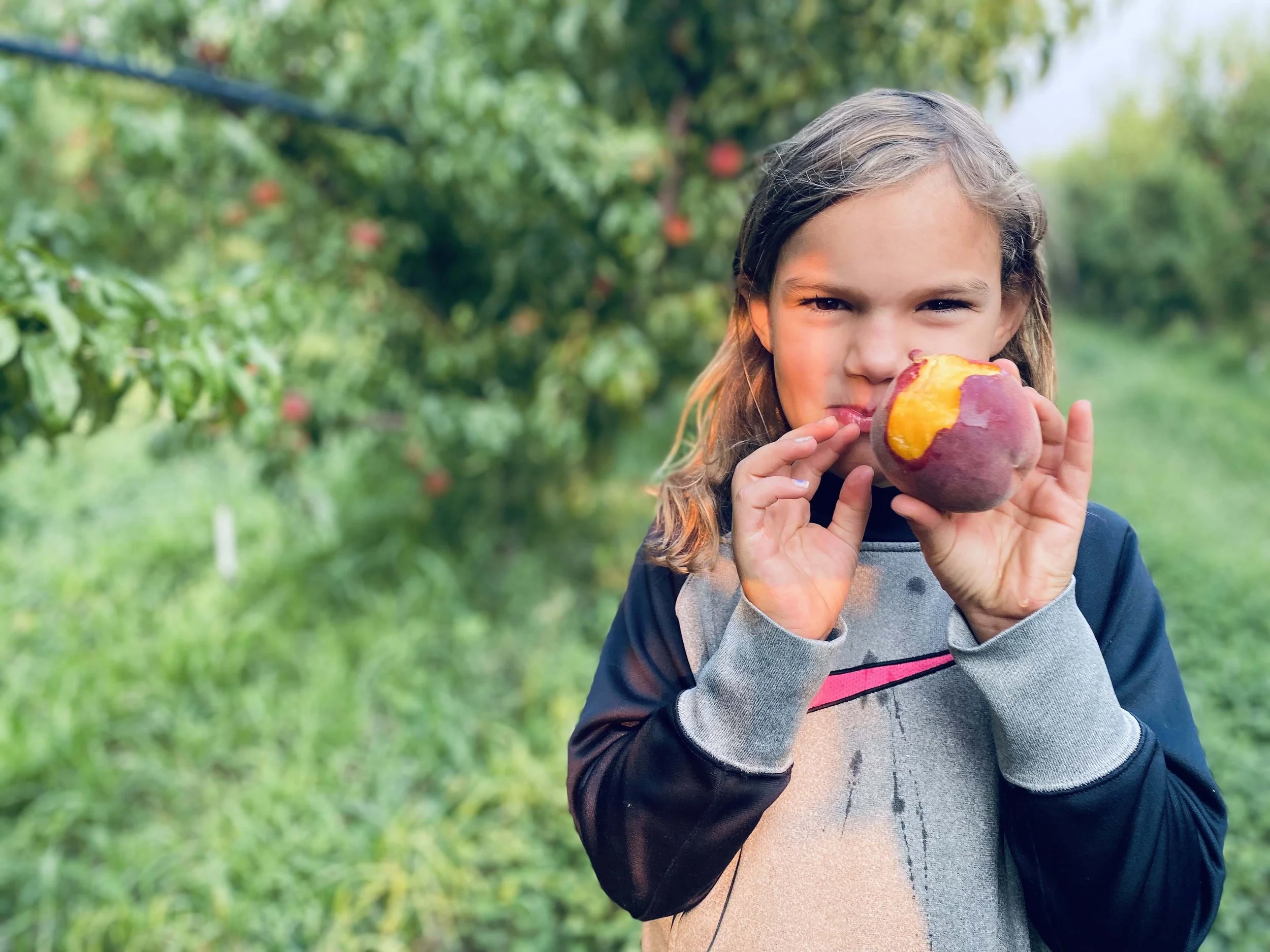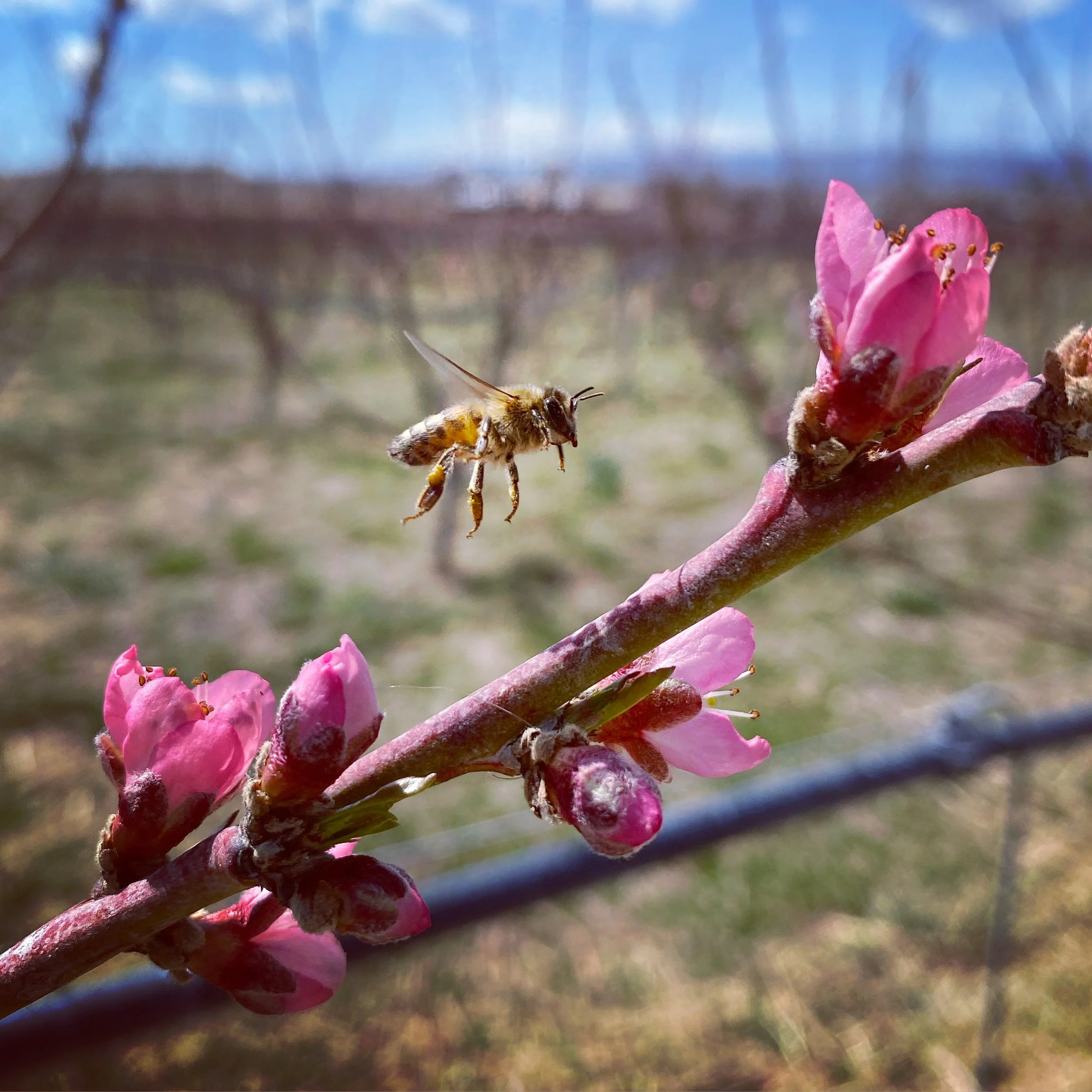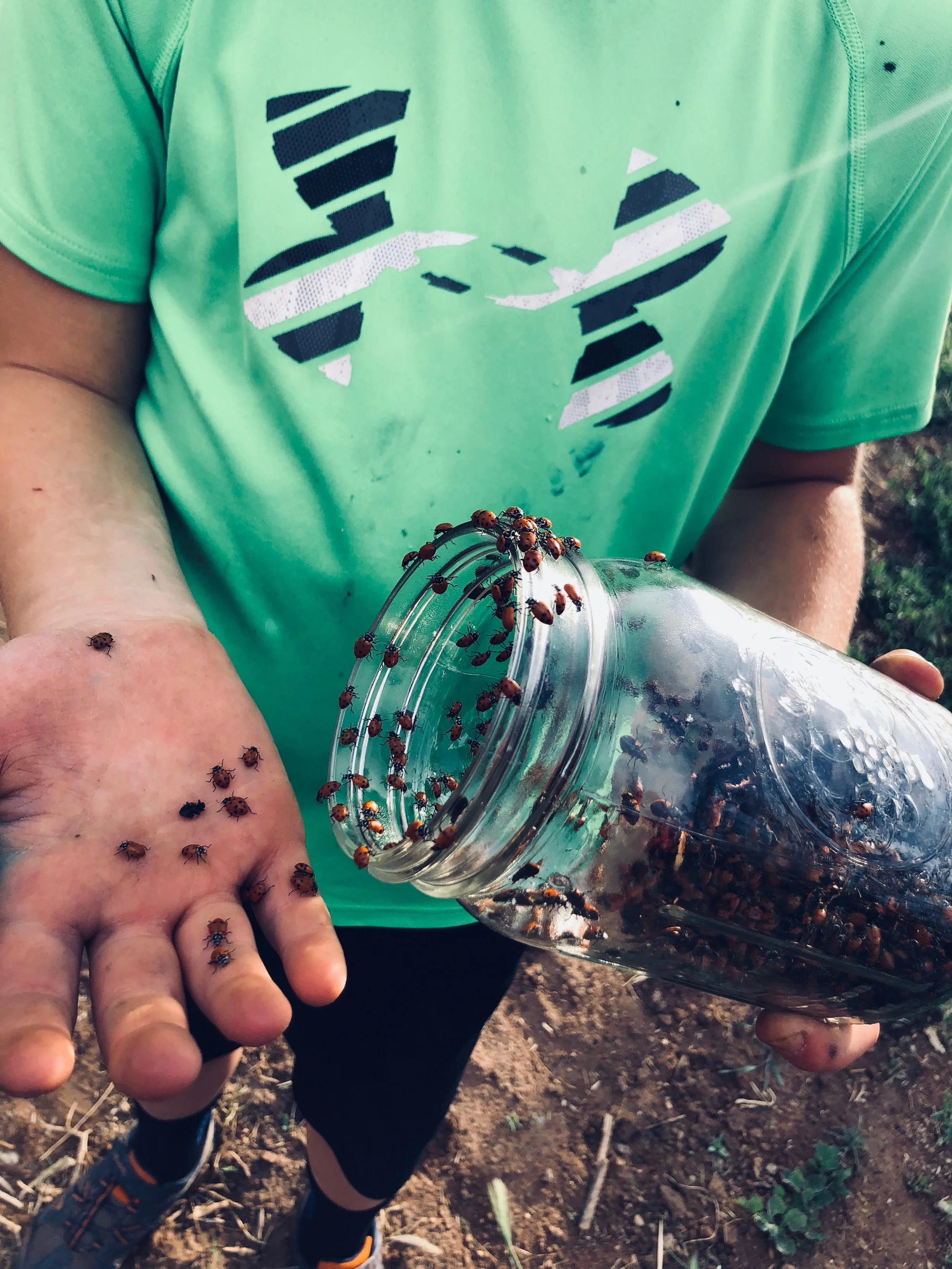About Bluebird Organic Fruit Co.
Our Story
We eat upwards of 300 pounds of peaches each summer and nearly all of them are eaten fresh – in smoothies, on yogurt, over homemade waffles, and on fresh shortcake with whipped cream. We will sometimes blanch, peel, quarter, and freeze peaches for smoothies and homemade ice cream, — a real treat in the off-season. We love sharing the same high-quality organic fruit we eat at our kitchen table with our customers. And you support us, and sustainable farming practices, when you do!
Why Palisade?
We first moved to the Grand Valley in 2009 for job opportunities and the year-round recreation. The Western Slope was a natural fit for us – still Colorado but an agricultural region. Civil Engineering is a fairly broad field and Luke knew he wanted to work in water resources so his first job after Peace Corps was with the U.S. Dept. of Agriculture, Natural Resources Conservation Service. Because we had grown up on farms and Luke worked with local viticulturists, farmers, and orchardists in his engineering work, we began to think about owning an orchard ourselves.
We wanted our kids to grow up working outside and alongside us and to have good food to eat and space to play/live. We chose peaches because we wanted to live in Palisade and the sunny days, elevation, and microclimate are perfect for peach-growing. Plus who doesn’t love peaches?!
Why Organic?
For our family, growing organic vs. conventional fruit was a simple decision, despite the greater labor input involved. The orchard surrounds the home and wanting to involve the kids as much as possible in the process, avoidance of health risks by using organic methods of pest control instead of toxic pesticides and herbicides was imperative. By farming organically, we can feel good about the kids playing in or near the orchards, eating pounds and pounds of peaches in the summer months, and in knowing that our practices do not risk our health nor the health of the air, soil, water, and wildlife. The ladybugs pictured above are released into the orchard to prey upon aphids, spider mites, whiteflies, mealybugs, among other harmful insects. They are one part of a multi-faceted pest management system, approved by the USDA.
